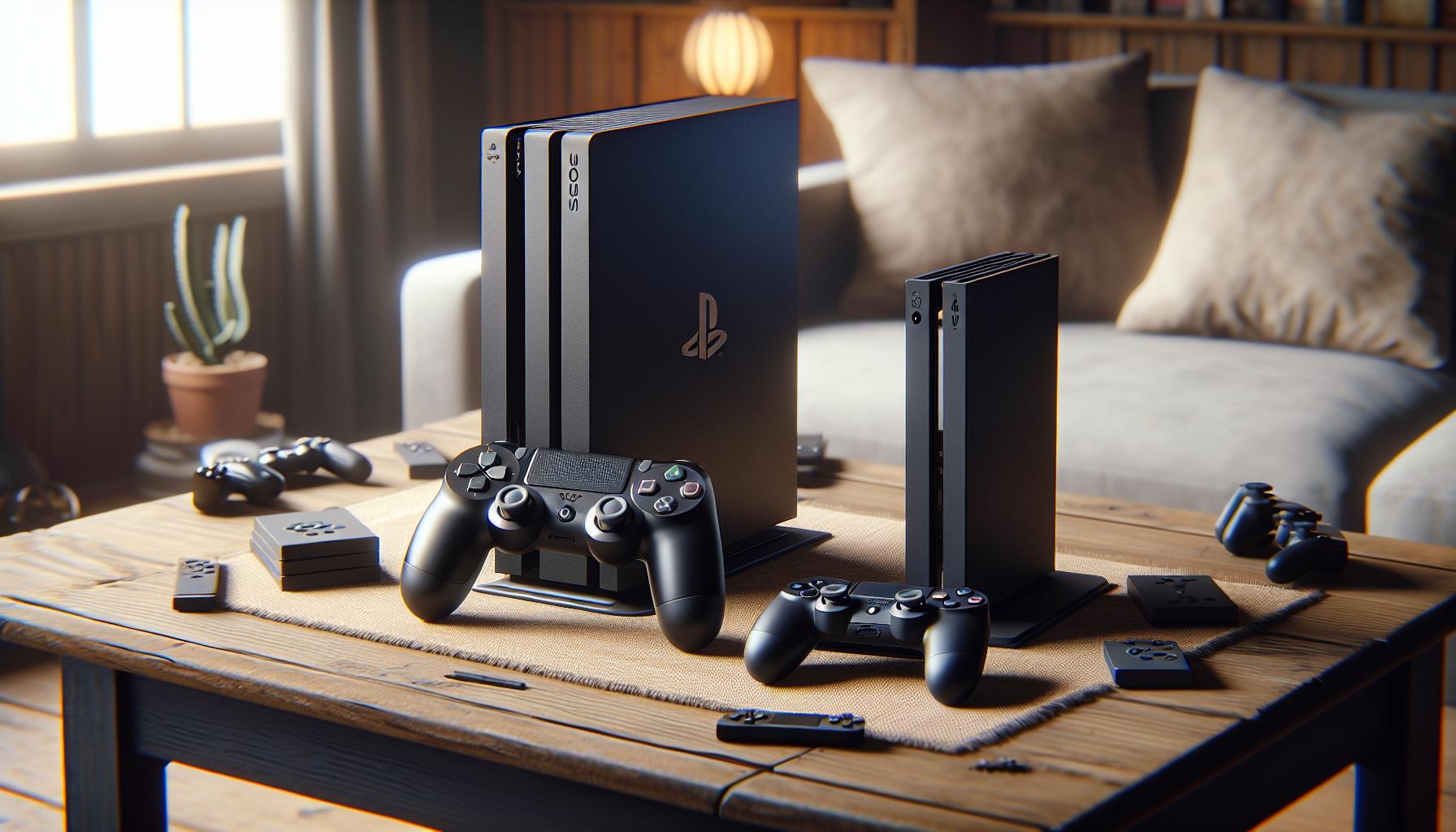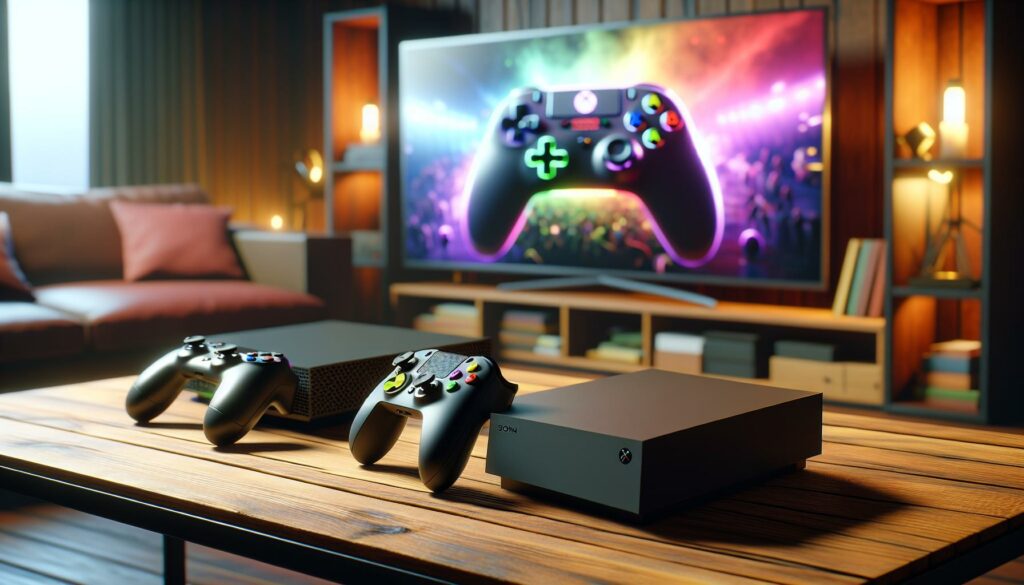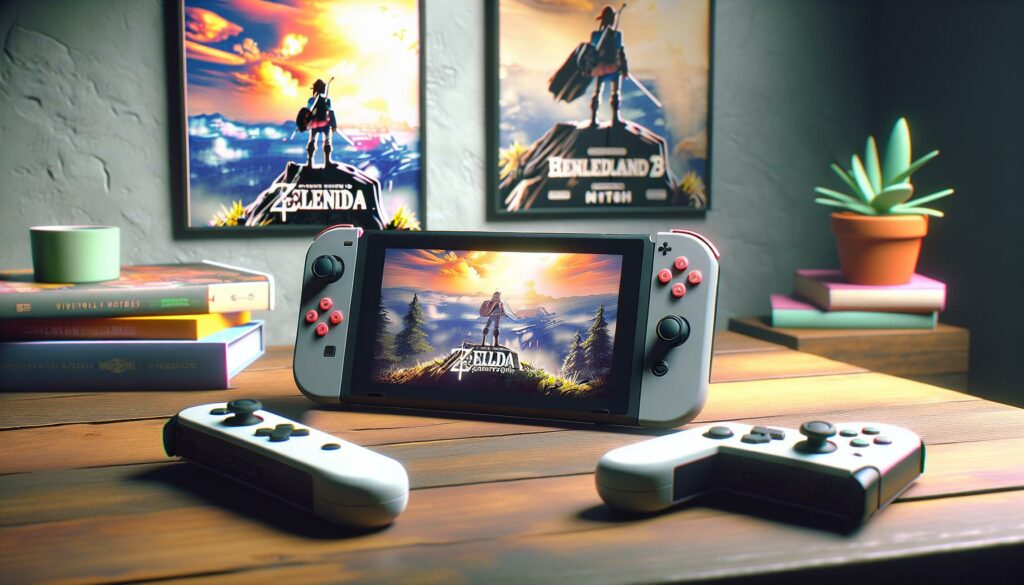When it comes to gaming, the choice between the Nintendo Switch and Xbox One can feel overwhelming. Both consoles offer unique experiences that cater to different types of gamers. As I dive into this comparison, I’ll explore their features, gameplay styles, and overall value to help you make an informed decision.
The Nintendo Switch stands out with its hybrid design, allowing for both handheld and docked play. On the other hand, the Xbox One boasts powerful hardware and a robust online gaming ecosystem. Whether you’re a casual player or a hardcore gamer, understanding what each console brings to the table is essential. Let’s break down these two gaming giants and see which one might be the perfect fit for you.
Key Takeaways
- Hybrid Design vs. Performance: The Nintendo Switch offers a unique hybrid design for versatile gaming sessions, while the Xbox One focuses on powerful hardware for superior graphics and performance.
- Exclusive Game Libraries: Nintendo Switch features family-friendly titles like “Zelda” and “Animal Crossing,” whereas Xbox One caters to hardcore gamers with franchises like “Halo” and “Gears of War.”
- Online Services: Nintendo Switch Online offers basic online features, while Xbox Live/Game Pass provides extensive multiplayer options and a large library of games for a monthly subscription.
- Accessibility Features: Both consoles prioritize accessibility, with the Switch allowing local multiplayer with detachable controllers, and Xbox One offering customizable controller settings to support gamers with disabilities.
- Price and Value Considerations: The Nintendo Switch provides great value at a lower price point, while the Xbox One’s advanced capabilities justify its higher cost for serious gamers seeking an immersive experience.
- Performance Differences: The Switch operates within 720p to 1080p resolution, suitable for casual gaming, whereas Xbox One supports up to 4K resolution offering a more visually rich experience.
Nintendo Switch vs Xbox One
The Nintendo Switch stands out with its hybrid design, allowing seamless transition between handheld and docked play. This versatility appeals to casual gamers seeking mobility and convenience. The system boasts a library of exclusive titles like “The Legend of Zelda: Breath of the Wild” and “Animal Crossing: New Horizons,” driving engagement for players of all ages.
The Xbox One, in contrast, focuses on powerful hardware and an extensive online gaming ecosystem. With features like backward compatibility, Xbox Live, and Game Pass, it attracts hardcore gamers looking for advanced graphics and multiplayer experiences. Exclusive games such as “Halo” and “Gears of War” cater to players who prioritize competitive gameplay.
Both consoles offer unique advantages. Nintendo’s robust first-party titles foster creative gameplay, while Xbox’s performance-oriented design enhances graphical fidelity and online connectivity. Each platform serves different gaming preferences, ensuring players can find the right fit for their needs.
Key Features Comparison

This section outlines the critical features of the Nintendo Switch and Xbox One, helping gamers assess the differences effectively.
Hardware Specifications
The Nintendo Switch features a custom NVIDIA Tegra processor, offering 720p resolution in handheld mode and up to 1080p when docked. Its 4 GB of RAM supports its unique hybrid capability. The Xbox One boasts a more powerful AMD Jaguar processor with 8 GB of RAM, delivering superior graphics capabilities and supporting 1080p and 4K resolution with the Xbox One X. The Xbox One also includes a larger hard drive, with options ranging from 500 GB to 1 TB, facilitating extensive game storage.
| Feature | Nintendo Switch | Xbox One |
|---|---|---|
| Processor | Custom NVIDIA Tegra | AMD Jaguar |
| RAM | 4 GB | 8 GB |
| Resolution | 720p (handheld), 1080p (docked) | 1080p, 4K (Xbox One X) |
| Storage Options | MicroSD compatible | 500 GB, 1 TB |
Game Library
The Nintendo Switch boasts a diverse game library featuring titles like “The Legend of Zelda: Breath of the Wild,” “Super Mario Odyssey,” and “Animal Crossing: New Horizons.” The focus on family-friendly games makes it appealing to a broad audience. In contrast, the Xbox One prioritizes a robust catalog for hardcore gamers, including franchises like “Halo,” “Forza,” and “Gears of War,” emphasizing competitive and immersive experiences. Both consoles offer additional third-party titles, catering to various gaming preferences.
| Console | Notable Exclusives |
|---|---|
| Nintendo Switch | The Legend of Zelda, Super Mario Odyssey, Animal Crossing |
| Xbox One | Halo, Gears of War, Forza |
Online Services
Nintendo Switch Online provides a basic online gaming platform inclusive of classic NES and SNES titles. Its cloud save feature enhances user experience but lacks depth compared to Xbox Live. Xbox Live offers a comprehensive online infrastructure, including multiplayer support, party chat, and an extensive selection of free games via Game Pass. Game Pass enables access to hundreds of games for a monthly subscription, significantly enhancing the Xbox One’s online value proposition.
| Service | Nintendo Switch Online | Xbox Live/Game Pass |
|---|---|---|
| Cloud Saves | Yes | Yes |
| Multiplayer Support | Limited | Extensive |
| Subscription Model | Required for online play | Monthly fee for Game Pass |
User Experience

User experience varies significantly between the Nintendo Switch and Xbox One. Each platform offers distinct advantages that cater to different types of gamers.
Accessibility
Accessibility features enhance the gaming experience for various players. The Nintendo Switch, designed for flexibility, features touch controls and detachable Joy-Con controllers, enabling local multiplayer without requiring additional hardware. Its lightweight and portable nature allows for gaming anywhere, accommodating on-the-go lifestyles. Xbox One includes accessibility options such as the Narrator, which reads on-screen text, and customizable controller settings, making it easier for gamers with disabilities to enjoy a wide array of titles. Both consoles strive for inclusion, ensuring gamers of all backgrounds find value.
Performance
Performance differences are evident in both consoles. The Nintendo Switch operates with a custom NVIDIA Tegra processor, delivering satisfactory performance for handheld gaming and a seamless experience when docked. Games often run smoothly, but graphic fidelity varies between titles, mostly staying within the 720p to 1080p resolution range. On the other hand, the Xbox One, featuring an AMD Jaguar processor, supports more sophisticated graphics and performance, particularly in action or visually heavy games. Titles on the Xbox One showcase resolutions up to 4K on the Xbox One X, providing a more immersive experience. Gamers seeking graphics-intensive titles often find Xbox One to outperform the Switch in this area, highlighting a trade-off between portability and high-end performance.
Price Point and Value

Price plays a significant role in choosing between the Nintendo Switch and the Xbox One. The Nintendo Switch is generally priced around $299, while the Switch Lite, a handheld-only version, retails for approximately $199. Both options provide good value considering the unique hybrid gameplay experience, allowing seamless transitions from docked to handheld play.
The Xbox One’s pricing varies by model. The Xbox One S starts around $299, while the more powerful Xbox One X can reach up to $499. These price points reflect the advanced hardware capabilities and extensive ecosystem of services available, such as Xbox Game Pass, which offers access to hundreds of games for a monthly fee.
Both consoles provide value based on the gaming experiences they offer. The Switch’s family-friendly exclusive titles serve casual gamers well, ensuring enjoyment for all ages. In contrast, the Xbox One’s robust online services and diverse game library appeal more to competitive players, justifying the investment in higher-end hardware.
Both consoles offer compelling reasons to consider their price point and value, catering to distinct gaming preferences and styles.



